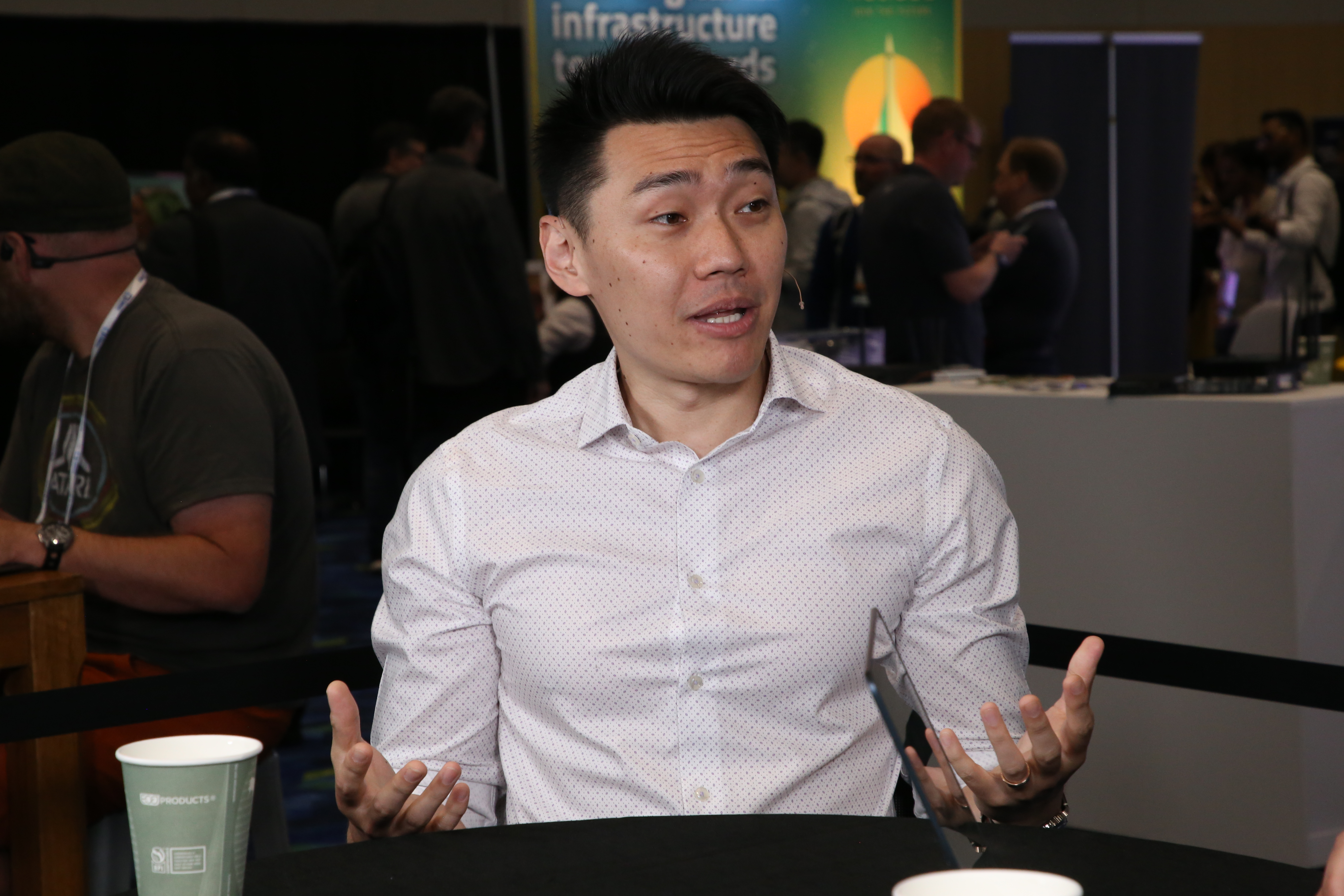1. SynFutures has grown into one of the largest decentralized perpetual exchanges — Where do you see the biggest opportunities for DeFi derivatives over the next few years?
The biggest opportunity is in bridging the best of CeFi performance with DeFi transparency. We’re moving toward a world where institutions, whales, and retail traders all demand on-chain access with CEX-level execution. Innovations like intent-based systems, off-chain matching with on-chain settlement, and native support for real-world assets (RWAs) are reshaping the way we think about on-chain markets.
We see growth in permissionless product creation, social and copy trading, and the integration of AI-driven agents using crypto rails for automation. The ability for users to execute complex strategies through natural language commands, manage assets autonomously, and even deploy AI agents to optimize trading will unlock a much broader audience. As DeFi infrastructure becomes more intuitive and accessible, derivatives trading can serve not only sophisticated traders but also long-tail users who previously found it too complex.
2. What are the unique challenges of building a decentralized derivatives platform compared to a centralized exchange?
The core challenge is achieving performance parity with centralized systems while remaining trustless and composable. CEXs can optimize everything internally, such as order books, risk engines, and latency, because they operate in a closed environment. In DeFi, you’re working within the constraints of blockchain consensus, network fees, and fragmented liquidity. Building SynFutures meant solving for this by designing a fully on-chain solution that created a user experience that feels as seamless as a CEX but is fully non-custodial. It requires balancing innovation with security and constant iteration to ensure trust and reliability
3. As DeFi expands across multiple chains, how do you approach addressing fragmentation and managing liquidity?
Liquidity fragmentation across DeFi is real, and dApps benefit significantly from the network effects that arise from good liquidity on an underlying chain. In our case, if there is better liquidity on the platform, SynFutures can provide a better trading experience for its users. We decided to deploy on Base as it is one of the chains with the most liquidity on it, and as such, we benefit indirectly from this, as potential users do not need to bridge capital from other ecosystems in order to use SynFutures.
In addition, our novel Oyster AMM model facilitates liquidity concentration within specific price ranges and incorporates leverage to increase capital efficiency. Unlike prevalent spot market-focused liquidity models such as UniSwap v3, the Oyster AMM introduces a margin management and liquidation framework tailored specifically for derivatives. Moreover, this model embraces the concept of two-sided liquidity while utilizing just a single token, eliminating the necessity to provide liquidity for both ends of a token pair. This streamlined approach enhances the efficiency of the trading ecosystem, making it even easier for traders to take advantage of SynFutures’ permissionless listings feature.
4. What do you consider the biggest barriers still preventing the mainstream adoption of DeFi?
Complexity remains a major hurdle. Many potential users are intimidated by wallets, transaction fees, and unfamiliar interfaces. Security concerns from past hacks and exploits also slow adoption. We believe AI-powered automation, better user education, transparent communication, and continued security improvements will help close this gap.
5. In a sector that moves as quickly as crypto, how do you personally prioritize what to focus on as a founder?
I focus on what creates the most long-term value. That means building resilient infrastructure that serves real user needs while balancing near-term product execution with a clear long-term vision. It starts with assembling the right team and culture — that’s what allows us to adapt quickly as the market evolves. We stay close to our top users, listen to their feedback, and iterate fast. Our roadmap reflects this dual approach: launching new products like spot aggregation, AI agent frameworks, and wealth management tools, while continuing to strengthen the core pillars of security, performance, and decentralization.
6. What leadership lessons have been most valuable for you in building SynFutures?
Clarity, consistency, and transparency have been the most important leadership principles. In a fast-moving startup, people face constant ambiguity, and my role is to provide clear direction, reinforce our values, and keep the team focused on what matters. At the same time, building trust across users, partners, and our team means being upfront about challenges, engaging the community, and sharing progress openly. I’ve also learned the value of deep listening, whether that’s to users, the market, and our team, and adapting quickly without losing sight of the long-term mission.
7. The crypto industry remains heavily male-dominated. What helped you succeed as a woman building in this space?
Drawing on my background in law, I have always approached building with a focus on reputation, credibility, and execution. Staying grounded, assembling a strong and diverse team, and being willing to learn from both Web2 and Web3 experiences have been key factors.
8. What actionable steps can the industry take to create more inclusive environments for women and underrepresented groups?
The industry should create more mentorship programs, ensure inclusive hiring practices, and provide visible role models across all levels. Proactively including diverse voices in conferences, panels, and leadership roles will help normalize inclusion and encourage more participation.
9. What advice would you give to founders navigating bear markets or difficult macro conditions?
Bear markets are a time to focus on building. Stay disciplined, keep improving your product, and maintain open communication with your community. Use this period to refine your technology, strengthen your team, and deepen relationships with partners. Founders who focus on solving real problems, prioritize security and trust, and build sustainable business models tend to emerge stronger when market sentiment turns. The projects that endure are often the ones that view downturns as an opportunity to lay a stronger foundation for long-term growth.
10. If you look ahead five years, what does success look like for SynFutures and DeFi as a whole?
Success means making DeFi as simple and intuitive as any Web2 financial platform while preserving decentralization, transparency, and composability. For SynFutures, the goal is to become the full-stack infrastructure layer that powers not only derivatives but a broad spectrum of on-chain financial services, driven by AI-powered automation and robust, community-driven growth. We are building towards being an “on-chain Nasdaq” that can serve institutional players with the reliability and sophistication they expect, while still meeting the needs of retail users who want open access to innovative financial products. Being institutional-ready does not mean compromising on decentralization: it means delivering the security, scalability, and user experience required to bring the next wave of adoption onchain.










